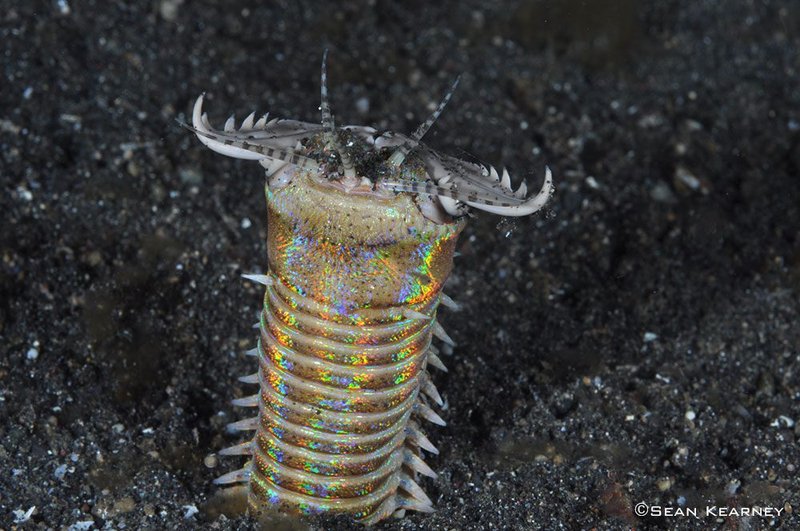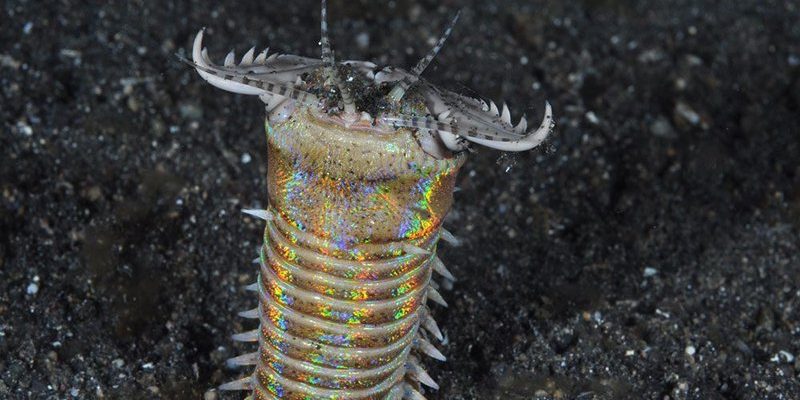
When thinking about how these creatures hunt and feed, it’s essential to recognize the different environments they inhabit. In the wild, Bobbit worms are stealthy predators with sharp, lethal abilities. On the flip side, when kept in captivity—like in aquariums—they often display quite different behaviors. So, let’s dive into the intriguing world of Bobbit worm feeding habits and see how they stack up between their natural habitat and a tank.
Understanding the Bobbit Worm
Before we get into their feeding habits, let’s take a moment to appreciate what a Bobbit worm really is. These fascinating marine animals can reach up to 10 feet long, though most are usually around 3 feet. Their bodies are made up of many segments, each adorned with colorful bristles. The Bobbit worm is known for its fierce hunting techniques, and you’d be amazed at how quickly it can strike.
Found in warm, tropical waters around the world, these worms prefer sandy or muddy substrates where they can easily hide. They employ a clever ambush strategy, lurking discreetly and waiting for unsuspecting prey to come too close. This makes them highly efficient hunters, allowing them to thrive in their natural environment.
Now, you might be wondering what exactly they eat. Bobbit worms primarily enjoy a diet of fish, crustaceans, and other small marine animals. Their powerful jaws can snap in a split second, making it easier for them to grab their meals. This predatory nature is crucial for their survival in the wild.
Feeding Habits in the Wild
In their natural habitat, Bobbit worms are like expert hunters. They use their keen senses to detect movement around them. When prey swims too close, the Bobbit worm can strike with incredible speed, thanks to its powerful jaws. This lightning-fast attack is key to their hunting success. Imagine a cheetah sprinting toward its prey; this is how these worms hunt—swift and precise.
Typically, their meals consist of:
- Small fish
- Crustaceans, like shrimp
- Invertebrates, such as mollusks
Once they catch their prey, Bobbit worms often pull it into their burrows to enjoy a meal in peace. This method not only protects them from potential threats but also ensures they can consume their food without interruption. This hunting strategy is essential, as it allows the worms to thrive in the competitive environment of the ocean floor.
It’s important to also note that Bobbit worms have a unique way of consuming their food. They don’t just swallow it whole; instead, they use their powerful jaws to bite into the flesh and then devour it. This feeding technique illustrates their skill as predators, deftly maneuvering through the underwater world.
Feeding in Captivity
When placed in captivity, such as an aquarium, the Bobbit worm’s feeding habits can change quite a bit. In a tank, they often lose some of their natural hunting instincts. The environment isn’t as dynamic as the wild, so they might not need to rely as heavily on their speed and stealth. Instead, they may become more opportunistic feeders.
In captivity, Bobbit worms are usually fed a mix of:
- Frozen or live brine shrimp
- Small pieces of fish
- Commercially available marine foods
Although they can still catch food, many aquarists find that the worms will wait for food to come to them instead of actively hunting it down. This can lead to some fascinating observations for those who keep these creatures as pets. You might catch them coming out of their burrows for a quick snack when food is introduced into the tank.
Despite the change in environment, they still maintain their impressive physical hunting skills. Their feeding mechanisms and adaptations remain intact, even if they don’t get as much practice as in the wild. It’s interesting to note that keeping a Bobbit worm can lead to unique challenges.
Challenges of Feeding in Captivity
Feeding Bobbit worms in captivity isn’t without its challenges. While they can thrive in a controlled environment, aquarists need to be mindful of their diet and habitat. If not provided with the right food or conditions, these worms can become stressed or even unhealthy.
Here are some common challenges you might face:
- Diet imbalance: It’s crucial to provide a varied diet to ensure they get all the necessary nutrients.
- Water quality: Bad water parameters can affect feeding and overall health.
- Space: Bobbit worms require enough room to burrow, or they may feel cramped and become lethargic.
It’s vital to monitor their behavior and feeding patterns closely. If a Bobbit worm isn’t eating, it might be a sign of an issue—like stress from poor water quality or an inadequate diet. Observing their habits can help ensure they remain healthy and active.
Differences in Feeding Behavior
One striking difference between wild and captive Bobbit worm feeding is the method of acquisition. In the wild, they are the hunters, employing stealth and speed to catch their prey. In captivity, however, they often take on a more patient approach. Instead of chasing down food, they may wait for it to come closer.
Another crucial aspect is how often they feed. In the wild, Bobbit worms may eat whenever they catch prey, while in captivity, their feeding may become more routine. Many aquarists recommend feeding them every few days, rather than every day, to mimic their natural feeding cycles.
If you’re keeping a Bobbit worm, it’s essential to pay attention to these differences. Understanding how their feeding habits change can help you take better care of them, ensuring they remain healthy and thrive in your aquarium.
In summary, the Bobbit worm is a captivating creature with unique feeding habits that vary greatly between the wild and captivity. By learning about their natural instincts and how they adapt to a controlled environment, you can appreciate these fascinating worms even more. Plus, if you’re considering keeping one, understanding their needs will help you create a suitable environment and ensure they thrive.
Ultimately, whether in the wild or in a tank, Bobbit worms remind us of the ocean’s wonders and complexities. Their feeding habits are just one aspect of their life, but it’s a crucial one that showcases their adaptability and resilience. So, the next time you think about these incredible creatures, remember their striking hunting skills and how they can teach us about the delicate balance of nature.

